The Iliad (Penguin Classics) Read online
Page 4
These bald statistics reveal the key players and balance of power that prevail on earth and Olympus. But number of speeches is not everything. Intensity of speech is also important. Hector’s wife Andromache makes only four speeches but they occur at highly emotional moments – when she thinks, and then when she knows, she will never see her husband again. Briseis, Achilles’ girl taken by Agamemnon, has only one speech, which she delivers when she is handed back to Achilles and finds Patroclus dead. At fourteen lines long, it is an extraordinarily powerful lament.36
The speeches carry the psychological weight of the poem. Homer’s actors reveal who they are, what makes them tick, primarily in what they say to each other and what they do, especially in how they react to each other. As we have said, there is a strong distinction between speeches, which evaluate and interpret and reveal character, and (third-person) narrative, which seems merely to report (see section above).
Consider, for example, the scene in which Patroclus is sent by Achilles to find out who has been wounded. Patroclus arrives in Nestor’s hut, and with exquisite economy Homer uncovers the various relationships. Nestor and Machaon
had quenched their parching thirst and were agreeably engaged in conversation, when Patroclus suddenly appeared in the doorway, a mortal like a god. The old man saw him, got up from his polished chair, took him by the hand, brought him in and told him to sit down. But Patroclus from the other side refused and explained:
‘No time for sitting down, my venerable lord; you will not persuade me. That man who sent me to find out the wounded man you just brought in – he commands respect. He is easy to annoy. But, as I can see for myself that it is Machaon, shepherd of the people, I will go back at once and report to Achilles. You know well enough, Olympian-bred sir, what a difficult man he is, quite capable of finding fault without reason.’
Nestor the Gerenian charioteer replied:
‘Why is Achilles so concerned about a few Greek casualties, when he knows nothing about the disaster affecting the whole army? (11.642–59)
The moment Patroclus appears, Nestor sees that this is a golden opportunity to get a message across to Achilles through his close companion. No wonder he immediately tries to make Patroclus feel so welcome and at home. Patroclus’ reply is just as telling. ‘That man’, he says, will not like it. He is ‘difficult’.
In a few brief, exquisitely suggestive strokes, we know all we need to about the sort of person Achilles is, the hold Achilles has over Patroclus, Patroclus’ feelings about Achilles and his (fully justified) unease at getting ensnared by Nestor. But Nestor will not let go. A few Greek casualties? The situation is far worse – and off he goes on a massive 148-line speech to persuade Patroclus that if Achilles will not return to fight, well, perhaps Patroclus should. It is a doom-laden turning-point.
That, incidentally, is why Nestor’s speech is so long. This is a critical moment, and such moments are usually expanded by Homer to indicate their importance. For example, in the climactic fight between Achilles and Hector in Book 22, the two heroes exchange spear throws, then Hector charges and Achilles kills him. But the whole ‘moment’ takes 340 lines from the moment Priam sees Achilles racing across the plain, to Hector’s death -the oral poet’s expansive art at its finest (22.25–366).
It is also typical of Homer to show character not through direct description but through the reactions of others. For example, when the heralds sent by Agamemnon to fetch Briseis arrive at Achilles’ quarters:
They came to a halt, too terrified and embarrassed before their lord to address him or ask anything. But [Achilles] realized what was going on and spoke out:
‘Heralds, ambassadors of Zeus and men, welcome. Come in. My quarrel is not with you ...’ (1.331–5)
Homer’s simple report of the heralds’ fear and embarrassment is all that is needed to indicate both how unhappy the heralds are with the task they have been asked to carry out – their role is to deliver messages, yet they stand there tongue-tied and quaking – and the sort of reaction they expected from a man like Achilles who, after all, had only just been prevented from killing Agamemnon. The sense of relief as Achilles absolves them and welcomes them in is almost palpable. This Achilles is capable of human sympathy after all.
Homer keeps himself in the background and lets his characters speak and act for themselves – a fine example of that Homeric ‘objectivity’, of which the poet is, of course, in total control (see p. xxix). Homer’s refusal to interpret scenes for us, but to stand back and merely report what happened and who said what to whom, leaves us room to breathe, to make our own sense of what is going on. So if, for example, we were to ask what is the moral of the Iliad, or what Homer really wanted us to think about Achilles, or war, or life, we would struggle to produce a definitive answer.
The novelist, by contrast, goes out of his or her way to leave little to the imagination: the reader is rarely in doubt as to the author’s view of the significance of every word and every action, however small or great. To that extent Homer anticipates the theatre. The dramatist cannot shape responses through the authorial third-person narrative: only actors, their words and actions are on display. Interpretation is all. As an oral poet, Homer speaks the parts anyway, like an actor; but although he would be able to impose interpretation through the third-person narrative if he so chose, he tends not to. We make of it what we will.
BATTLES
Of the 15,000 lines in the Iliad, battle takes up some 5,500, made up of three hundred encounters.37 Death, unrealistically, nearly always comes quickly and cleanly after a single blow, though there are some odd or gruesome deaths from particularly nasty blows:
Peneleos struck him under the eyebrow in the socket of the eye. The spear dislodged his eyeball, pierced the eye-socket and came out at the back of his head. He sank back, stretching out both his hands. But Peneleos, drawing his sharp sword, hit him full on the neck and brought head and helmet tumbling down to the ground. The heavy spear was still stuck in the eye as Peneleos raised it aloft, like a poppy-head ... (14.493–9)
But the field is not littered with moaning, wounded and dying warriors.
Out of the three hundred encounters there are only twenty-eight duels, i.e. where warriors confront each other and agree to fight. Warriors very rarely launch out into an extended sequence of killings (Patroclus and Achilles are among the few exceptions38). Hit-and-run is by far the most favoured tactic. The warriors, in other words, tend to look after themselves as best they can. They are not desperate to die. Of the 230 warriors killed in these encounters, 170 are Trojan, 50 Greek.39
Even though there are many typical sequences and features to the battle-scenes (see p. xxviii), Homer varies them with great ingenuity: general fighting, individual combats, strings of deaths, battle on the ground or from chariots, exhortations, taunts, challenges, routs, counter-attacks, divine interventions, similes, and so on. In particular, he often gives us quite moving individual thumbnail portraits of the dead warriors, evoking personal worlds far from the battlefield:
Then Menelaus son of Atreus caught the brilliant hunter Scamandrius with his sharp spear. Scamandrius was a great man for the chase, who had been taught by the goddess Artemis herself how to bring down any kind of wild game that lives in the mountain forests. But Artemis who delights in arrows was of no help to him now, nor were the long shots that had won him fame. As Scamandrius fled before him, the great spearman Menelaus son of Atreus stabbed him with his spear in the middle of the back between his shoulders and drove it on through his chest. He crashed down on his face, and his armour clattered about him. (5.49–59)
Note the primary information: Scamandrius, expert in the chase, is killed by Menelaus. Then comes the development: he was a hunter, taught by A R T E MIS but, ironically, she could not help him now. Finally, the detail of the death: he is stabbed through the back as he fled. This method of describing the death of a warrior is very common.
The contrasting scenes of war and peace add powerfully to the pat
hos of the Iliad. The brief description that accompanies the fall of a warrior often points up the contrast. Here the Greek hero Diomedes cuts down Xanthus and Thoön:
Then he went after Xanthus and Thoön, sons of Phaenops, both late-born. Phaenops was old now and ailing and had no other son to whom he could leave his wealth. Diomedes killed them both, depriving them of their precious lives and leaving their father only tears and a broken heart. He never welcomed them home alive from the war. Relatives divided up the estate. (5.152–8)
Homer’s restraint is typical. The report is enough: he does not have to make efforts to elicit our sympathy with an intrusive emotionalizing comment.
Similes, too, introduce worlds a long way from the battlefield. The natural world, of lions, boars, hunters and farmers, features frequently. This is usually a dangerous world, of defence and attack. Here Idomeneus faces Aeneas:
But Idomeneus was not to be scared off like a little boy. He waited for him like some mountain boar, confident in his strength, who faces a crowd of huntsmen advancing on him in a lonely spot: his back bristles, his eyes flame like fire and he sharpens his tusks, eager to take on men and dogs – so the great spearman Idomeneus awaited the onslaught of Aeneas and gave no ground at all. (13.470–78)
Homely similes are equally in evidence. Here the god APOLLO smashes through the Greek defences, like a boy on the beach:
Then, with equal ease, the god knocked down the Greek wall, as a boy at the seaside knocks down a sandcastle: he builds it to amuse himself, as children do, and then with his hands and feet wrecks the whole thing for fun – so you, Apollo, wrecked the Greeks’ arduous efforts and sowed panic among them. (15.361–6)
Here the poet remembers the pre-war days. As Achilles chases Hector, they pass ‘the stone washing-places where the wives and lovely daughters of the Trojans used to wash their shining clothes in earlier days, when there was peace, before the coming of the Greeks’ (22.154–6). This focus on different worlds away from bloodshed and death is one of the Iliad’s greatest glories, one source of its rich humanity.
SIMILES
There are over three hundred similes in the Iliad, occupying about 1,100 lines (7 per cent of the whole). They are miraculous creations, redirecting the listener’s attention in the most unexpected ways and suffusing the poem with vividness, pathos and humour. There are four basic types:
1. Short similes with a single point of comparison, e.g. ‘like nightfall’ (1.47), ‘like fawns’ (22.1).
2. An extended short simile, in the form ‘like X, which/that…’, for example ‘like fawns that dash across the plain and exhaust themselves and stop, because they have no more will to resist’ (4.243–5).
3. The subject is mentioned, and the simile begins in the form ‘as when, as, like’, and ends ‘such was/so X happened’ (ring- composition: see p. xxviii). The similes likening Idomeneus to a boar, and APOLLO to a boy knocking down a sandcastle, are of this type.
4. The simile introduces the subject before the narrative has reached that point – thus ‘as when Y happens, so X happened’, for example: The spear ‘hit Aretus’ round shield. This failed to stop it, and the spear pierced it and drove on through his belt into his abdomen. As a strong man with a sharp axe strikes a farmyard ox behind the horns and then cuts its throat, and the ox springs forward and then collapses, so Aretus sprang forward and then fell on his back’ (17.517–23). The point is that Aretus had not collapsed when the simile began – the simile describes an ox collapsing and then says that was how Aretus collapsed.
Similes tend to occur at moments of high emotion, drama and tension, often introducing a change of perspective (e.g. the entrance of a warrior), and they are especially prevalent in battle-scenes. The most common points of comparison with human life and action are lions (used forty times in all), birds, fire, cattle, wind and water, and boars. Thirty-one subjects occur once only: these include mule, ass, worm, rainbow, bean, dew, milk, lead, oil, ivory, trumpet, sandcastle and horse-trainer. As for their function, these similes introduce worlds of peace and plenty into a martial poem; they impose the unchanging world of nature on temporary, fleeting human existence, dignifying and adding significance to it; by using contemporary subject-matter within the experience of all listeners they give contemporary vividness to the world of the heroic past; and they often create deep pathos, for example the dying warrior likened to a poppy heavy with spring rain (8.302). In the similes, perhaps more than elsewhere, Homer speaks most directly to us. Here Achilles addresses Patroclus, who has just been witnessing the Trojan onslaught on the Greeks:
‘Patroclus, why are you in tears, like a little girl running along beside her mother and begging to be carried, tugging at her skirt to make her stop, although she is in a hurry, and looking tearfully up at her till at last she picks her up? That, Patroclus, is how you look, with the soft tears rolling down your cheeks.’ (16.7)
Achilles is likened most frequently to fire (fourteen times), a god and a lion, and nine times in a parent-child image, often involving Patroclus – a significant comparison.
THE AUTHENTICITY AND SURVIVAL OF HOMER’S TEXT
In his Prolegomena ad Homerum (1795), the German scholar F. A. Wolf argued that our Iliad and Odyssey were the work of more than one man.40 His reason was that Homer did not know how to write, and that Homer’s poems were far too long for oral recitation. He therefore concluded that Homer composed a series of short, connected oral poems c. 950 BC; that these were expanded by other poets till writing became available; they were then enlarged even more by ancient literary editors, who used writing; and the result is what we have today. The job of the scholar was therefore to decide what was Homeric, and what was not – the famous Homeric question. So began the long battles between the ‘analysts’, such as Wolf, and the ‘unitarians’, who believed there was one composer only of the Iliad.
Many competing analytical theories emerged.41 Some argued that Homer composed only a few songs himself, others that he assembled short songs composed by others into a larger structure. Some thought the Iliad was originally a brief poem about Achilles’ anger, later expanded either by the addition of episodes, or by enlarging existing episodes. Images of the Iliad’s construction abounded: of skins like an onion or layers like a cake, of adding pieces to a puzzle or a superstructure to a house, of dough into which new ingredients were blended, and so on.
But oral theory now holds sway. Most scholars believe that one poet was responsible for our Iliad; that its unique size and concentrated focus are indicative of a special poetic effort, generated by whatever cultural and poetic circumstances; that Homer comes at the end of a tradition of oral story-telling going back hundreds of years (so that he has, in a sense, inherited the work of hundreds of earlier oral poets); and that his art consists in the unique way he has reworked these traditional, typical materials devised to enable the oral poet to recite in the first place – from phrase and sentence at one level to ‘theme’ and story-pattern at larger levels – into the masterpieces we have today. But that leaves the questions – how do they survive to this day, and with what resemblance to any oral ‘original’ (if, indeed, oral poets had a concept of an ‘original’) ?
All ancient Greek literature was given a definitive form by Greek scholars working in Egypt from the third century BC onwards to produce the best text they could.42 Their texts form the basis of ours, but it is impossible to tell how far our text represents any single oral performance: the evidence, by definition, cannot exist. These ancient Greek scholars, like earlier ones, felt unhappy about much that they found in Homer, especially the repetitions (they did not understand how oral poetry worked – see p. xxviii) and failures of style and logic (oral poetry is different from written in this respect). They therefore raised many questions about what was Homeric and what not, and the idea of ‘many Homers’ is very old. There is no doubt that there was interference with the text of Homer down to the third century BC (at least): the question is, how much?
There is gene
ral scholarly agreement that Book 10 is not by Homer. It is wholly self-contained, it is never referred to again, and if it was not there, no one would notice its absence. The slaughter of sleeping men by night is hardly heroic. There are many oddities of language, and the speeches are not constructed as they are in the rest of the epic. Beyond that, there is general agreement that in conception the Iliad is the work of a single mind, though there continues to be disagreement about detail.43 Inconsistencies are generally explained nowadays as the result of Homer’s gradual expansion and development of the story over a long period of time, or of his incorporation into the text of material that did not quite fit, rather than because of interference with the text by others.
That raises another important question: if Homer’s epics were the product of an oral performance c. 700 BC, how do they survive to this day? At some stage they must have been written down, but we do not know how or when. Some scholars believed Homer used writing, in which case there is no problem. Written versions certainly existed by the sixth century BC because we hear of efforts to produce a standard text of Homer for bards to recite at competitions. From then on, such was Homer’s influence that his texts were copied and recopied for education and pleasure throughout the Graeco-Roman periods.
When the Roman empire in the West collapsed in the fifth century AD, what knowledge of Greek literature there was in the West disappeared with it.44 Even the Bible was read for the next almost thousand years in Jerome’s Latin translation (begun AD 380). But Greek continued to be read and copied in the Roman empire in the East centred round Constantinople (modern Istanbul), an empire inhabited almost entirely by Greek speakers.
However, when Ottoman Turks began to threaten that city from the twelfth century AD onwards, its scholars fled west with their precious manuscripts. This is how Greek literature survives today. Western Europe knew about Homer at this time, of course, because Roman authors mentioned him constantly (Virgil’s Aeneid was a sort of Roman Iliad-Odyssey). So it was a thrilling time for Western scholars in Italy when Greeks began arriving with these great works that they had only heard of but never read. A convenient date to mark Homer’s arrival back in the West is 1354, when Petrarch acquired a manuscript of the two epics from Nicolaos Sigeros, a Greek involved in the unification of the Western and Eastern churches. Naturally he could not read them and in a letter he writes: ‘Homer is mute to me, or rather I am deaf to him. Still, I enjoy just looking at him and often, embracing him and, sighing, I say, ‘‘O great man, how eagerly would I listen to you.’’ ’45

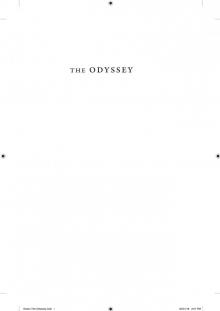 The Odyssey
The Odyssey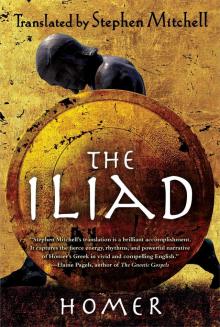 The Iliad
The Iliad The Iliad (Trans. Caroline Alexander)
The Iliad (Trans. Caroline Alexander)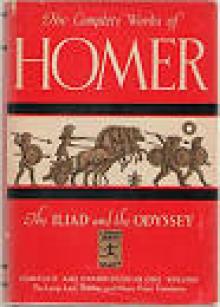 Complete Works of Homer
Complete Works of Homer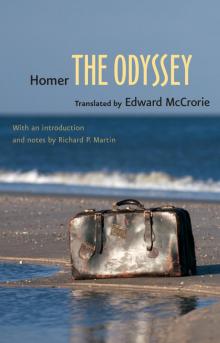 The <I>Odyssey</I>
The <I>Odyssey</I>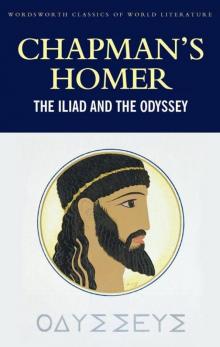 The Iliad and the Odyssey (Classics of World Literature)
The Iliad and the Odyssey (Classics of World Literature) Troy
Troy The Iliad (Penguin Classics)
The Iliad (Penguin Classics) Delphi Poetry Anthology: The World's Greatest Poems (Delphi Poets Series Book 50)
Delphi Poetry Anthology: The World's Greatest Poems (Delphi Poets Series Book 50)